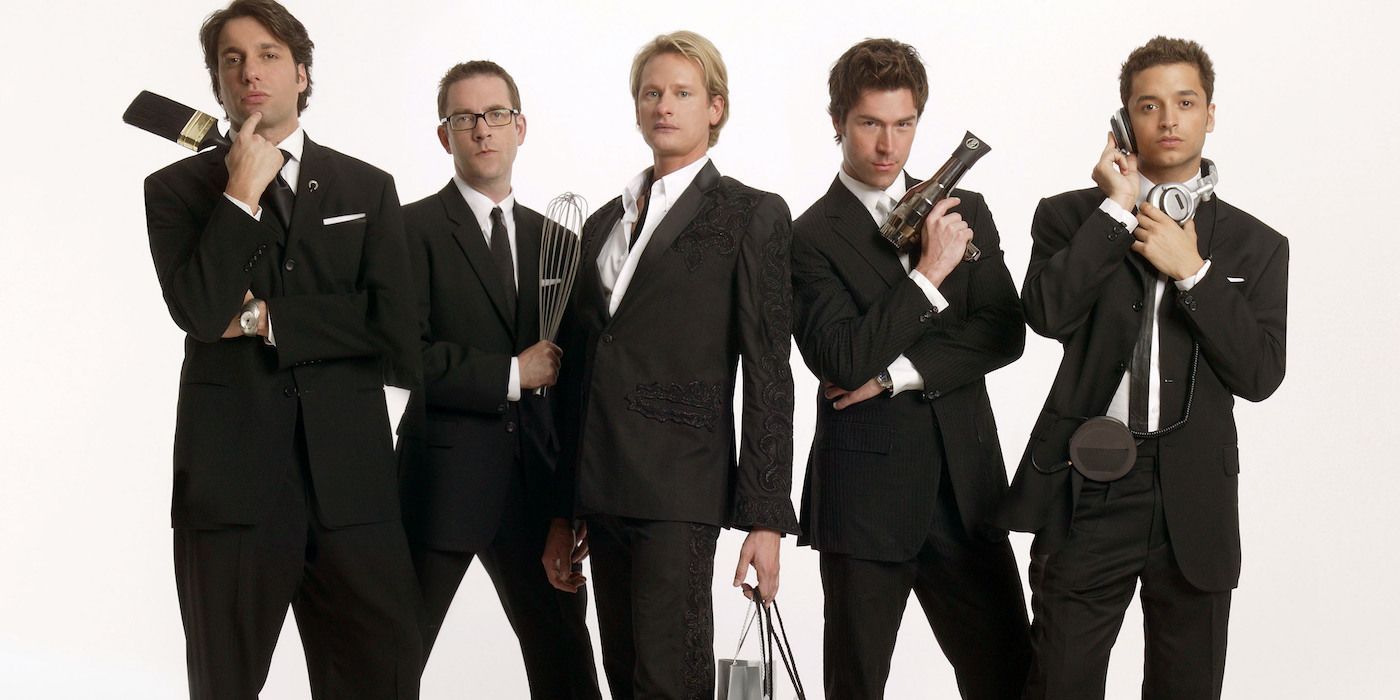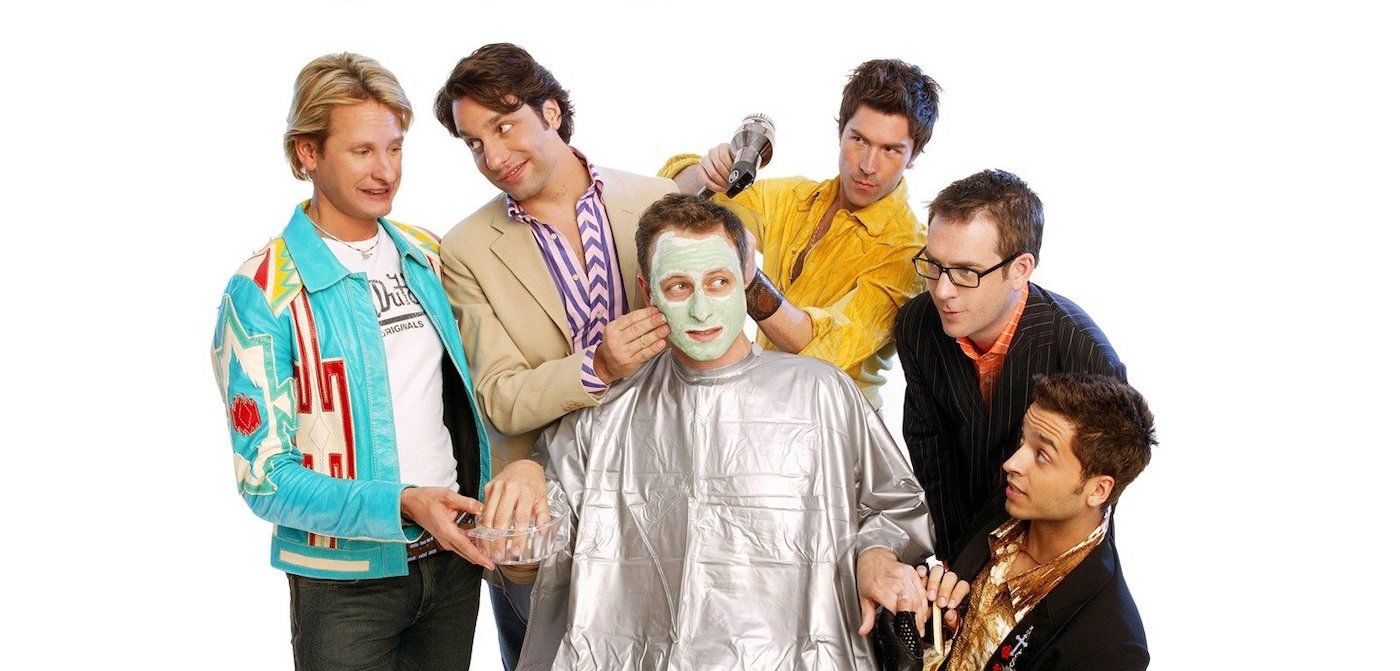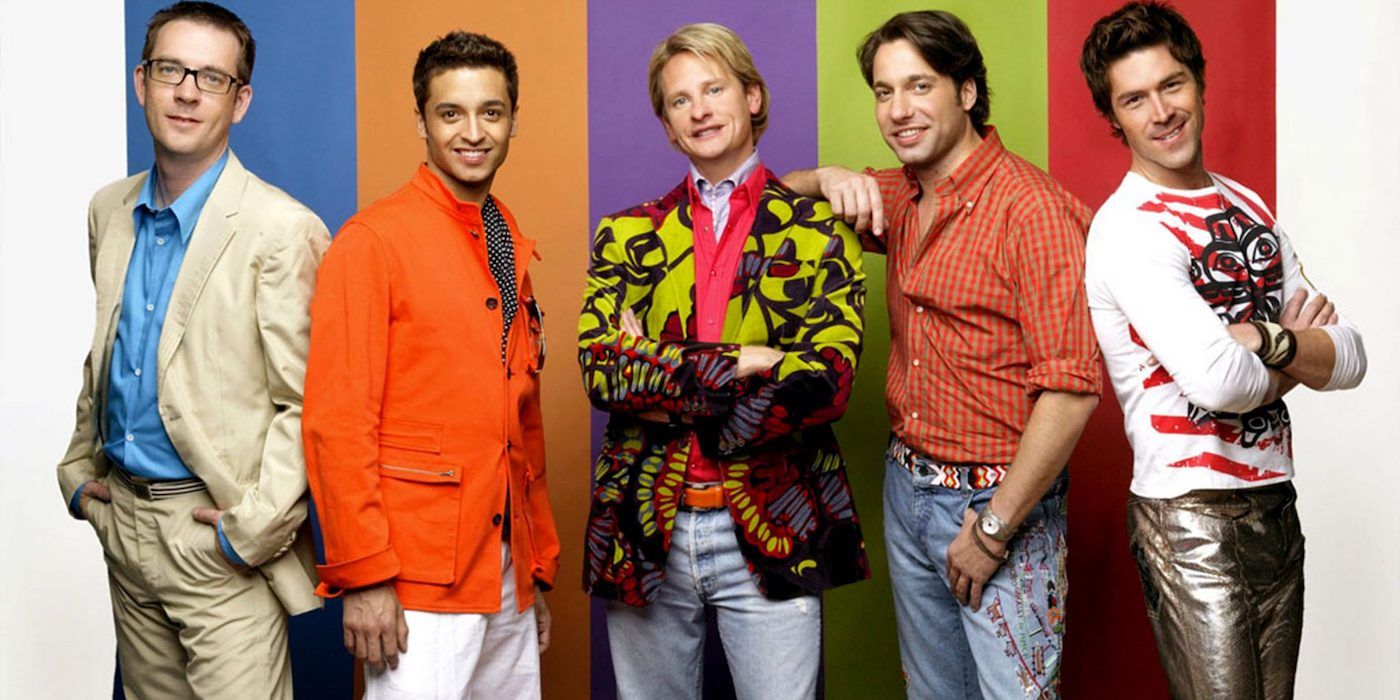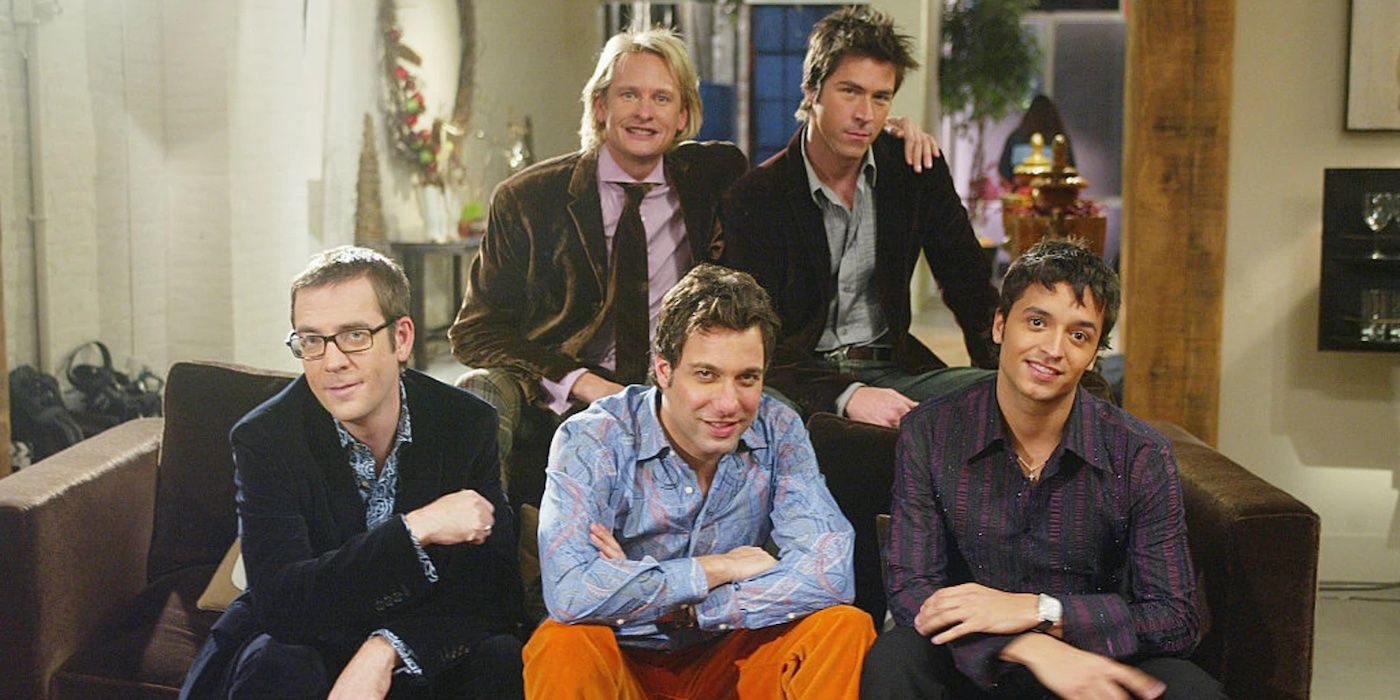Emmy noms are out and once again, Queer Eye is in the running - a popular and feel-good program that continues to bridge the gap between queer and heterosexual communites. However, while the latest incarnation imbues the quest for a trendy haircut with personal stories and eye-opening trauma, without the original team to lay the foundation with a contagious and innocent optimism, the show could have easily gone to the Reality TV chopping block.
2003’s Queer Eye For The Straight Guy plucked five experts in their respective fields and thurst them onto our screens and into our hearts: Kyan Douglas, the grooming expert, Thom Filicia, the home decor afficanado, Ted Allen, with his culinary know-how, Carson Kressly, stylist and MVP, and Jai Rodriguez, the pop culture maestro. While the reboot has a strong focus on narrative, positioning the presenters to confront their own histories and feelings as much as the participants, the original, despite its intentionally controversial title, gave what it said on the tin. It was a makeover show where participants grew from drab to fab. The crossing of political and social boundaries inevitably came with the territory, but in the relative safety of New York, and with a can-do enthusiasm that suggested a statement belt and ocre-coloured carpet was enough to diffuse any discomfort between participant and expert, the show was unique in its inclusive messaging.
By the time of the show's inception, great steps forward in gay representation within mainstream media had been taken, with gay and lesbian characters appearing on a number of high-rating television shows. But these were actors, only a handful gay in real life and veiled with a cloak of "character." Six years prior, Ellen DeGeneres had come out on her self-titled sitcom, prompting a ratings decline and eventual cancellation. As Jai Roderiguez stated shortly before 2018’s Queer Eye relaunch, “In 2003, being out was political." It was good and well for homosexuality to exist within the confines of fiction, but the dwindling numbers for Ellen post-coming out was a sign that audiences were only willing to accept a sanitized, fictionalized gay. It is interesting to note that the sitcom also came under fire from members of the LGBT+ community, including GLAAD media direction Chaz Bono, who derided what was perceived as a tonal shift in the sitcom from comedy to a lecture, criticizing the show for becoming “too gay”, with viewers’ commentary largely focused on the program's morph into “Ellen’s gay soapbox." In other words, audiences were ready to embrace homosexuality, but only on the condition that they’d shut up about it. Enter The Fab Five….
Allowing conservative Middle Americans an opportunity to spend time with out-and-proud homosexuals proved a revelation. An opportunity for heterosexual audiences to see “people like us” engage and learn from “the Other” was an eye-opener. Not only were the hosts unabashedly enthusiastic about their own sexuality, but they were also thrust into the world of countless hetero households embarking upon acts of chaotic altruism. The original Queer Eye had no interest in the personal struggles of its hosts, nor was it positioned as a sounding board for the expression of gay rights. The fact that it was able to open the eyes of many a viewer to the lives, or at least the concept of homosexuality (however stereotyped it may seem to a modern audience), was a happy by-product. As Kressley, the breakout star of the series claimed, “I was just trying to get people out of pleated khakis, quite frankly”. This matter-of-fact purpose is perhaps why the show was able to be so widely embraced where Ellen had fallen. “We didn’t have flags and signs, we weren't being controversial in any way — we were just doing our job and helping the straight guy get the look or get the girl or get the job and being experts in our fields and we were just being our real selves."
Even if the intentions of the hosts were nothing more than fun-filled fluff, there can be little doubt that the producers had other things in mind, not least with the title which was overt, controversial, and a way of bridging social gaps between gay and heterosexual men. The show’s creator, David Collins, remembers his aim of bringing “stereotypical expertise in easily digestible, and often heartwarming chunks” required a clear and easy format that would provide legitimately transformative tips, but also become a peephole “into how the other half lives.” In other words, for all the advice on cooking salmon and good shaving techniques, there was an understanding that the program was about personal development in a broader sense.
Throughout the montages of game-but-bewildered heteros running through Manhattan in order to keep their appointment with the next gay guide, there remained a heartfelt motivation that was devoid of grandstanding; Men helping men who they may otherwise never encounter. No dwelling on personal anecdotes, no tales of bullied childhoods, just a trolley dash around the city in a bid to teach the value of the loafer and the benefits of behaving as a thoughtful grown-up.
In an interview with The Daily Dish, series producer Christian Barcellos explained that the title intentionally made a “bold, provocative statement” in the hopes of appealing to a broader pop-culture audience whilst maintaining the network’s existing viewership. Barcellos and the team were aware of the possibility that their title would have the opposite effect but remained confident that their formula would win over the naysayers. To Barcellos, this meant promoting an open and engaging atmosphere in which “there was no militancy about the 'queer’ view,” but instead showcased an organic, fun-filled dynamic and a bond that was made through the makeover process. “We weren’t out there to change anybody’s opinion…they were there to help”. Kressley echoed the sentiment, suggesting it was never about being gay or being straight, but rather “guys helping guys….building bridges between our communities”.
The number of interactions the original cast has had with fans over the years points to countless lives that have benefitted from their presence and popularity. The portrayal of the community as a supportive and warm group, ready and willing to help anyone and everyone, has resulted in endless anecdotes about the show's impact on society at large, not to mention a myriad of tales about its assistance in children and adults coming out to their loved ones. Ted Allen summed up its gentle but important impact by suggesting that the novelty and power of Queer Eye were that those on the margins “maybe felt a little more hope for happy, successful lives when they saw us being embraced by the culture”.
For Rodriguez, the success of the initial series proved that it was not only acceptable, but important to take up space and be present, even in places “that didn’t always want us”. However frivolous they may have felt the concept, the show and its sassy and benevolent ambassadors were infiltrating the broader community, entertaining and inspiring viewers. With the original series focusing on the relative safe haven of New York and its surrounds, praise was abundant, and participants were rarely anything worse than baffled. Conversely, Queer Eye 2.0 has found itself in areas where residents begrudge the concept of brunch, let alone the necessity of investing in a pair of driving mules. Without putting too fine a point on it, herein lies a drama that was avoided in the innocence of the original.
These hasty conflicts are perhaps the only accusation one could make towards the otherwise respectful new incarnation. Needless to say, it's a question of taste, with some suggesting a personal and political agenda is required in the current climate, while others argue the series is smugly selling itself as a bastion of progressiveness” filled with “manipulative stunts. Intentionally setting up conflict by involving Trump voters who wouldn't want to have a conversation with, let alone get a makeover by, a gay man, before forcing them into a dialogue touching on current events can seem heavy-handed and very, well, Reality TV-like. But there is no doubt that the goodwill of the original remains, even if the aim of building bridges through the art of well-fitted jeans has morphed into something more political, and, depending on your level of cynicism, poignant.
Style over substance may have been the initial impression, but there is no doubt that the juggernaut that was Queer Eye For The Straight Guy allowed for more open conversations about gay representation within the media, not to mention the countless personal stories of its positive effect on those struggling to come out to their friends and family. Although some have argued that the original presenters of Queer Eye reflected only the most stereotypical homosexual, as one of the first programs to lead with its queer (or queer-adjacent) qualities, it became a game-changer and allowed viewers with less experience an unabashed insight into a new world, and paved the way for the world to see that everyone is the same, although some have better furniture.




